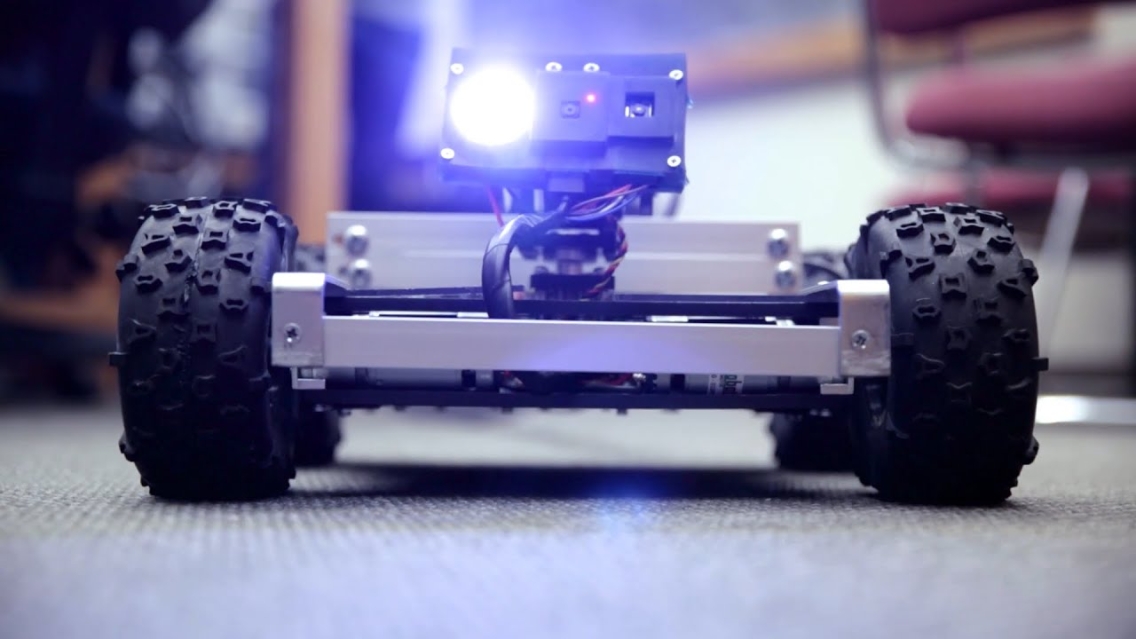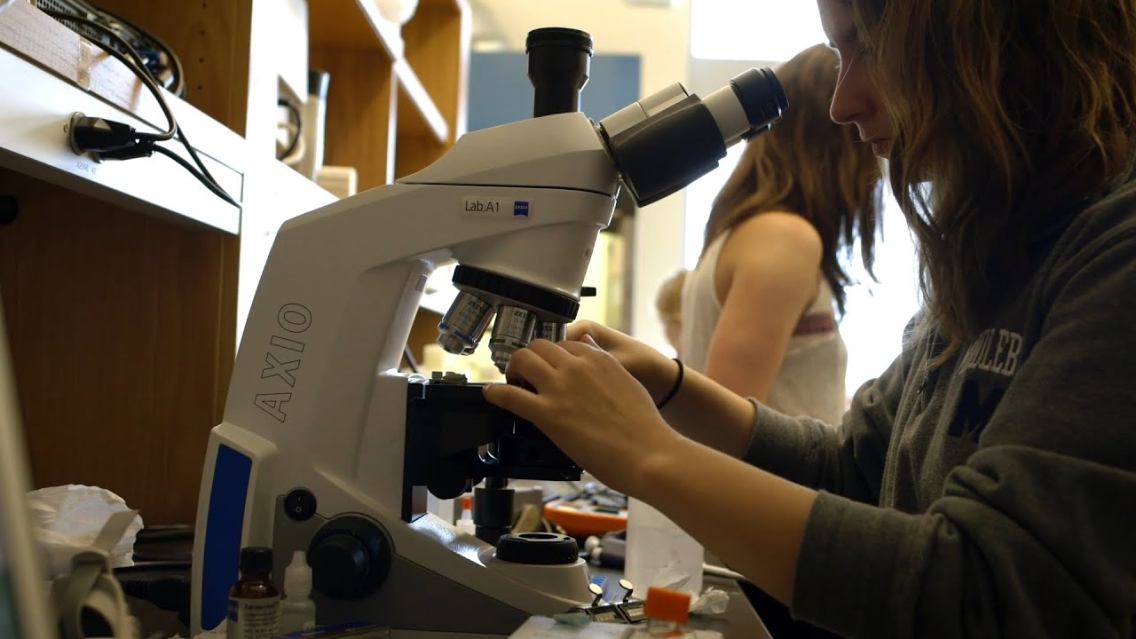STEM Innovation Program
The STEM Innovation Program is a creative and interdisciplinary program designed to challenge students to formulate and implement a solution to a scientific or technological problem.
During years that it is offered, a team of students from a variety of departments and disciplines in science and mathematics designs and implements a technological solution to an important real-world problem. Their goal is to develop a deliverable product in 10 weeks through technological innovation, collaboration, and iteration.
To apply, please visit the STEM Innovation Program application form.
Questions? Email us at: STEM-Innovation@middlebury.edu
“At Middlebury, we are combining the aspects of science, technology, engineering, and mathematics to educate our students the way that science is actually done in the real world.”
- Biology Professor and Stem Innovation co-leader Jeremy Ward
Press Coverage
Student-Designed Rover Could Improve Safety for Facilities Staff
Middlebury News Room, 2017
STEM Innovation Program Inspires
Middlebury Campus, 2016
Middlebury College STEM Innovation Program
Middlebury Voices, 2015
Science and Society
Middlebury Campus, 2013
Previous Projects
2017: NightCap Party Safety Platform
This team built NightCap, a student-centered mobile platform for improved campus safety consisting of an iPhone application and location-based student responder database, along with a prototype portable alcohol sensor.
2016: Remote Inspection Vehicle with InfraRed
This team built a rover that could go into the College’s steam tunnels and use infrared imaging to detect steam traps that are in need of repair or maintenance. They worked with College facilities staff to formulate the design goals and test both their prototypes and the finished product.
2015: Infrared Thermography Camera
This team designed a user-friendly infrared sensor to alert a farmer if there is a high probability that a cow has digital dermatitis, or another foot ailment. Lesions associated with digital dermatitis, as well as ulcers and warts, generally manifest as hotter regions on an infrared image of a cow hoof as a result of increased blood flow to the hoof. The device is capable of converting between a handheld version, which features a camera placed on the end of a rod with a touchscreen interface for the user, and a mounted version, which can be affixed to a rail in a specific stall in the milking parlor to photograph the hooves of each cow in that stall.
2014: An Aquatic Research Vessel for the Detection of Cyanobacteria
This team designed an aquatic surface drone boat and in situ cyanobacteria detection system to monitor harmful cyanobacteria blooms. The fluorescent properties of the bacteria were targeted to measure concentrations in water samples collected by the boat. The detector was calibrated to bacteria standards cultured in lab and tested on local lake water samples. An open-source autopilot system was modified to guide itself to points on a lake and initiate the sampling mechanism.
2013: An Automated BTEX Biosensor
This team designed an automated biosensor to detect the aromatic hydrocarbons: benzene, toluene, ethylbenzene, and xylene (BTEX) in water. An extrachromosomal DNA sequence was designed using regulatory elements of the aromatic catabolic pathway found in Pseudomonas putida to induce expression of green fluorescent protein (GFP) in the presence of BTEX compounds. Escherichia coli were then transformed with this plasmid and lyophilized for long-term storage. The team also built a mechanical sensing apparatus designed to automatically reconstitute lyophilized bacteria with a water sample and detect GFP fluorescence.



